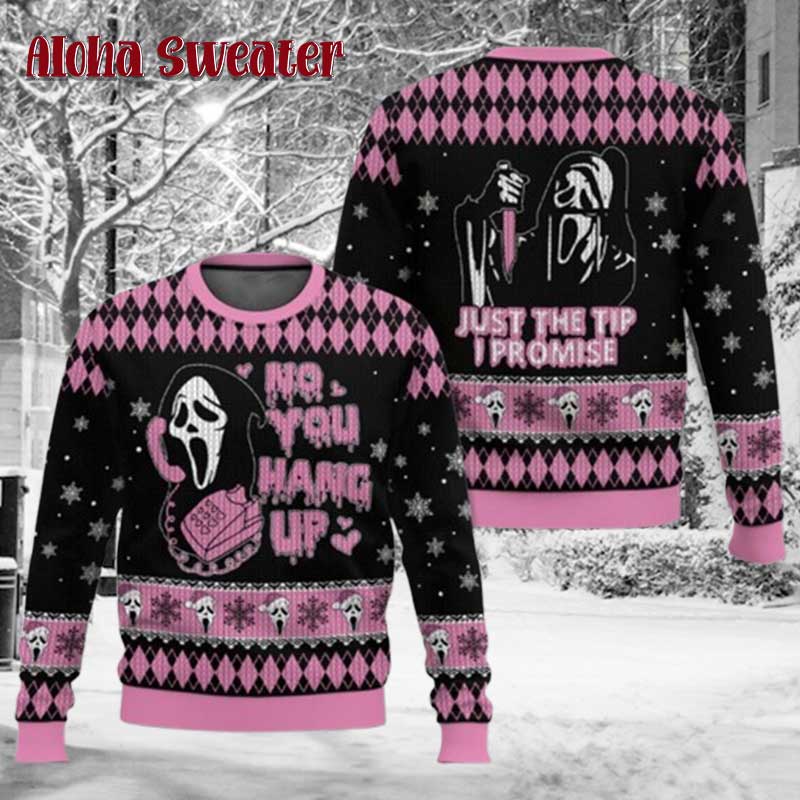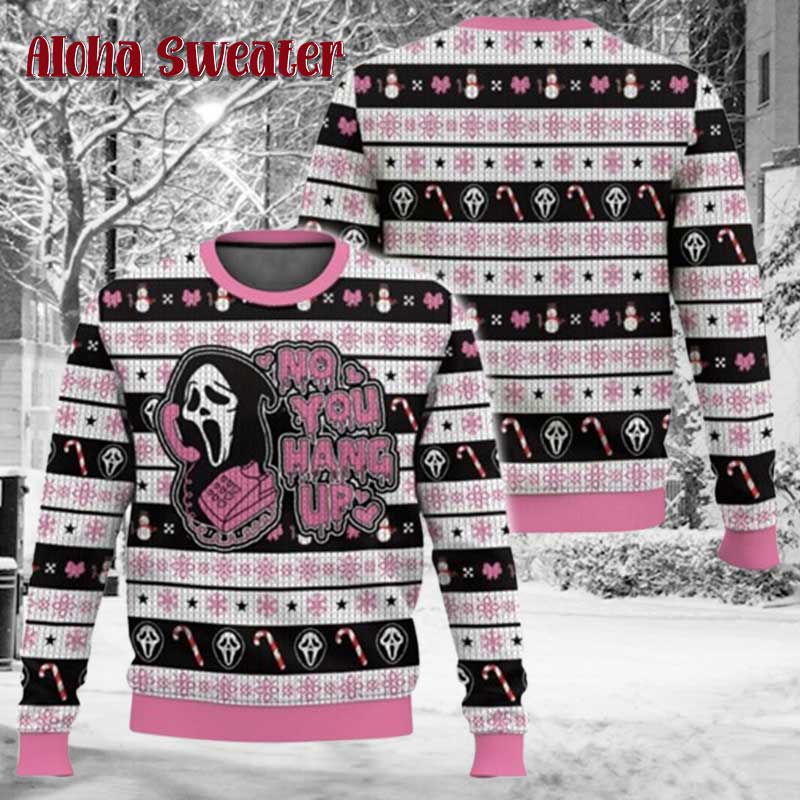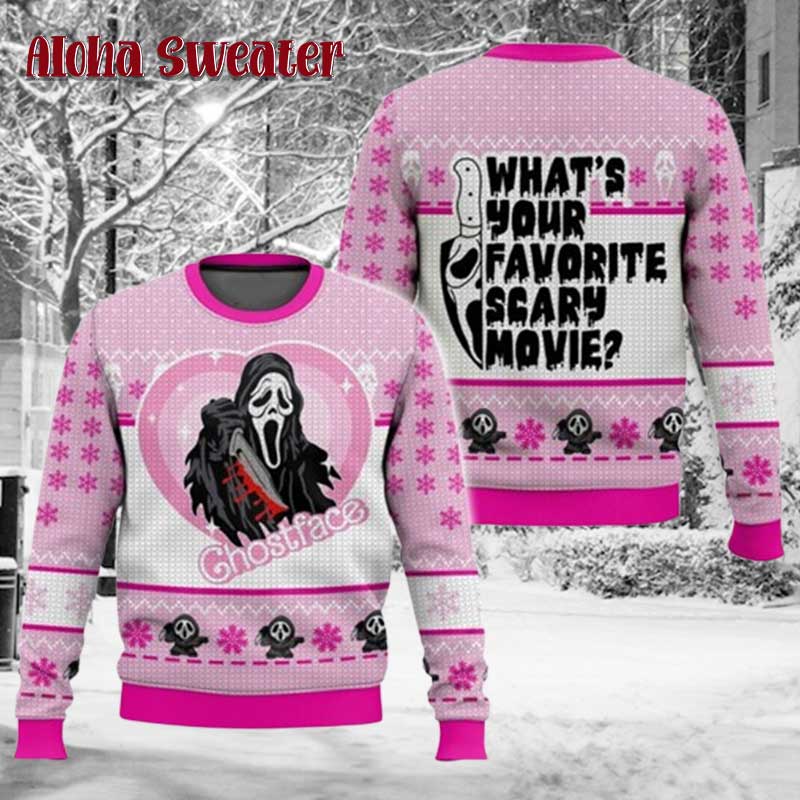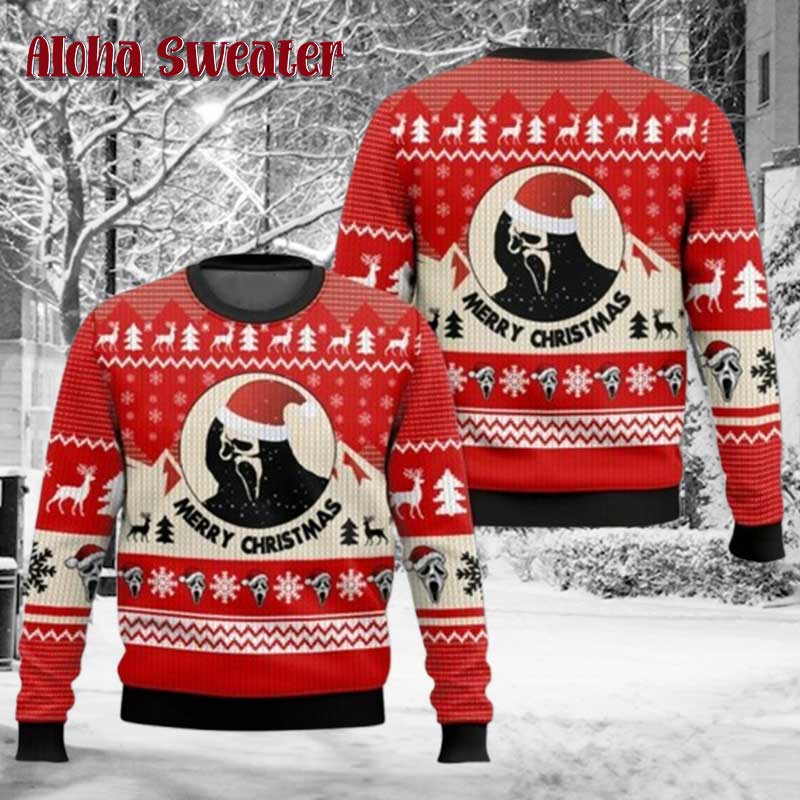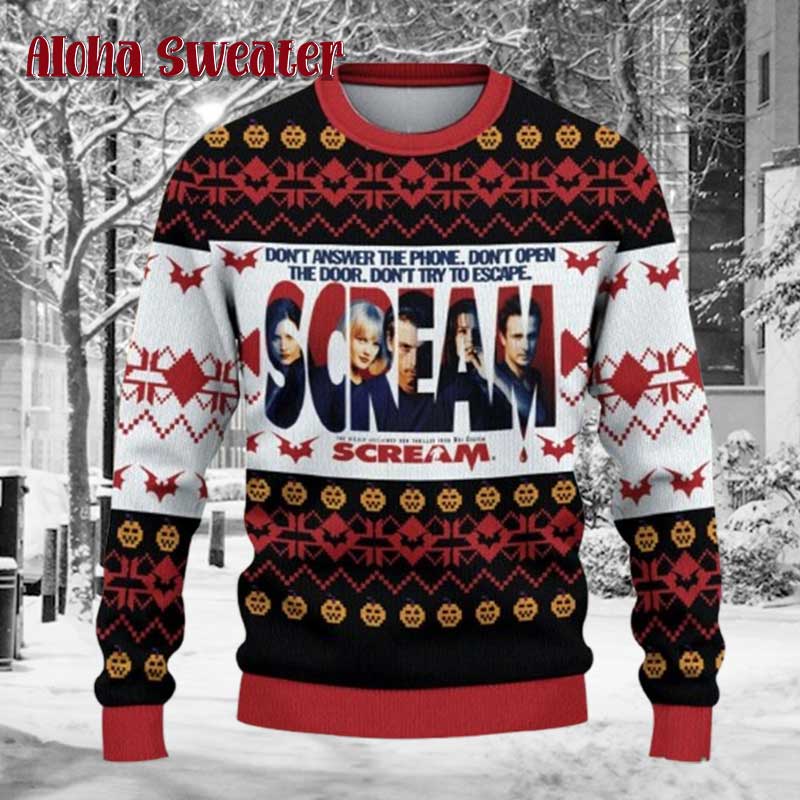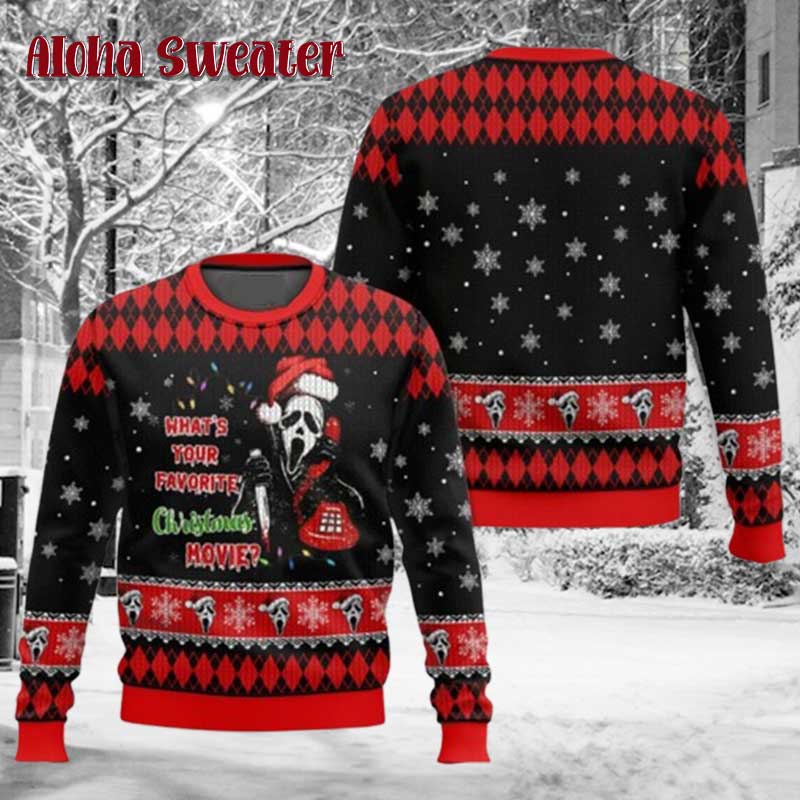Horror Meets Holiday Cheer
Ugly Christmas sweaters thrive on exaggeration. They take bold patterns, bright colors, and familiar symbols, then push them to absurd extremes. Ghostface is already a character built on exaggeration—his mask is dramatic, his actions theatrical, and his presence both frightening and strange. Combining him with holiday motifs creates a clash that feels natural within the ugly sweater tradition.
The effect is playful. Ghostface may hold a knife, but he stands among snowflakes and candy canes. His mask, once eerie in a dark alley, becomes comic when repeated in rows of red and green. This clash between horror and cheer is what makes the sweater appealing.
Symbols That Define the Designs
Designs in this category draw from the films while keeping the knitwear aesthetic intact. Common motifs include:
-
The Ghostface mask: repeated across sweaters like snowmen or reindeer, instantly recognizable.
-
Knives: outlined in holiday colors, often placed alongside ornaments or stars.
-
Blood drips: turned into stylized red borders that double as festive stripes.
-
Quotes: iconic lines such as “Do you like scary movies?” stitched in pixelated fonts.
-
Telephones: a nod to the franchise’s classic opening scenes, simplified into knit patterns.
Together, these elements shift the slasher story into seasonal humor. Fans recognize the symbols, while non-fans see only a playful exaggeration.
Humor Through Contrast
The humor of the Ghostface Christmas sweater lies in tension. Horror is about suspense and fear. Holiday sweaters are about warmth and laughter. When placed together, the result is absurd. A figure who stalks victims at night suddenly appears framed by holly leaves. A design that should be frightening turns silly through its context.
This does not mock the films. Instead, it highlights how horror and comedy often overlap. Scream itself plays with parody and self-awareness. The sweater continues that tradition by placing Ghostface in an environment he does not belong, making him part of the joke.
Nostalgia and Shared Memory
The first Scream film was released in 1996. Since then, the franchise has produced sequels, reboots, and cultural references that span decades. For many, Ghostface is tied to the memory of late-night horror viewings or the thrill of teenage slasher films.
The sweater extends that memory into the holiday season. By wearing one, fans bring together two traditions: rewatching the films and celebrating Christmas. It becomes a marker of identity—both as a horror fan and as someone who embraces holiday humor.
Why It Works as a Christmas Sweater
The ugly sweater tradition is about play. It exaggerates patterns, mixes themes, and embraces the awkward. Ghostface fits this tradition because he is already both frightening and comical. His mask is a caricature of fear. When repeated across a sweater, it becomes decoration.
This is why Ghostface works well in holiday knitwear. He is both a horror icon and a parody, which makes him flexible. Fans can wear the sweater at a party, laughing at the contrast, while still recognizing the roots of the character.
A Seasonal Ritual for Fans
Pulling out a Christmas sweater has become an annual event. For horror fans, adding Ghostface to that ritual makes the season personal. It combines a love of scary movies with a time of celebration. The sweater reappears each year, carrying both memory and humor.

